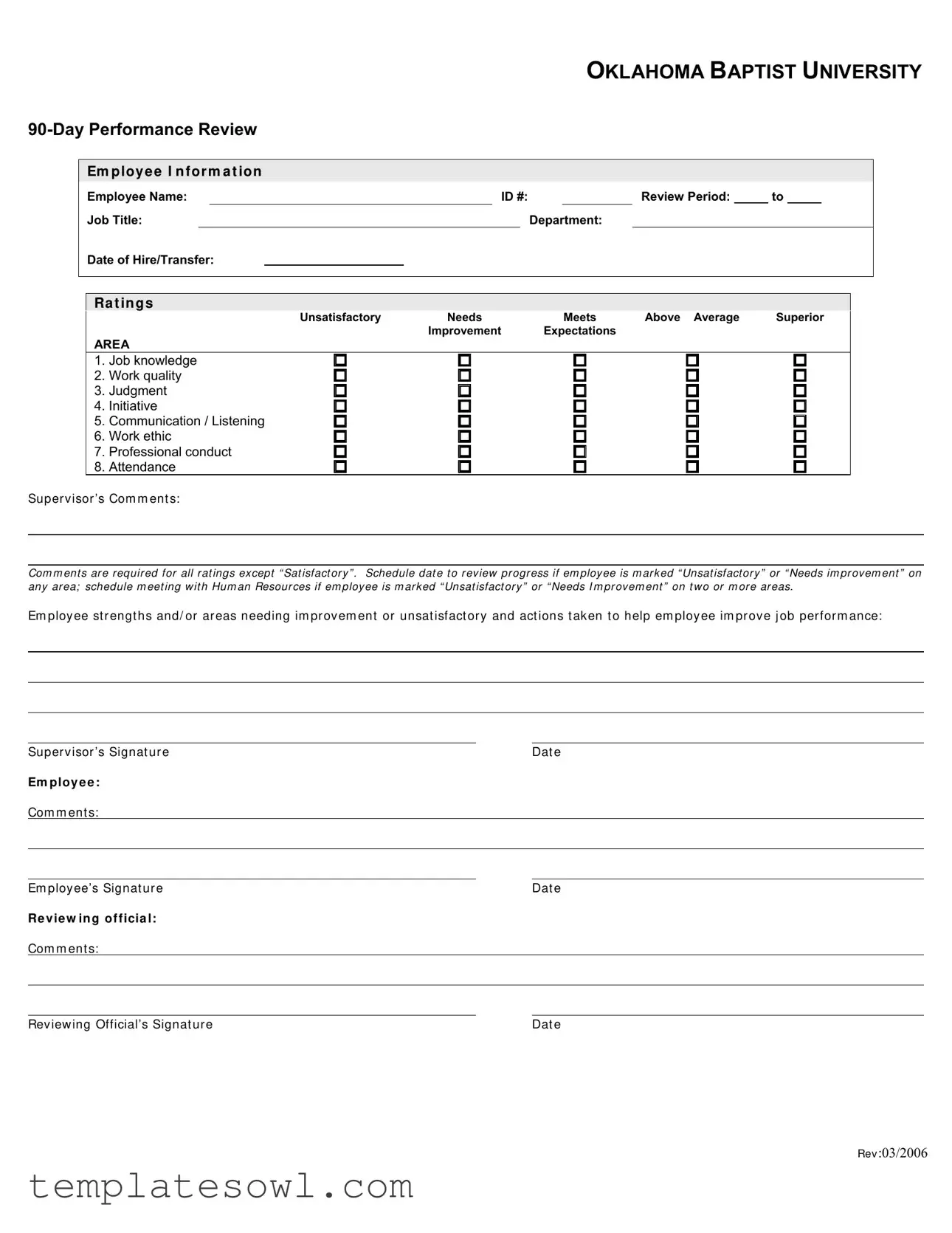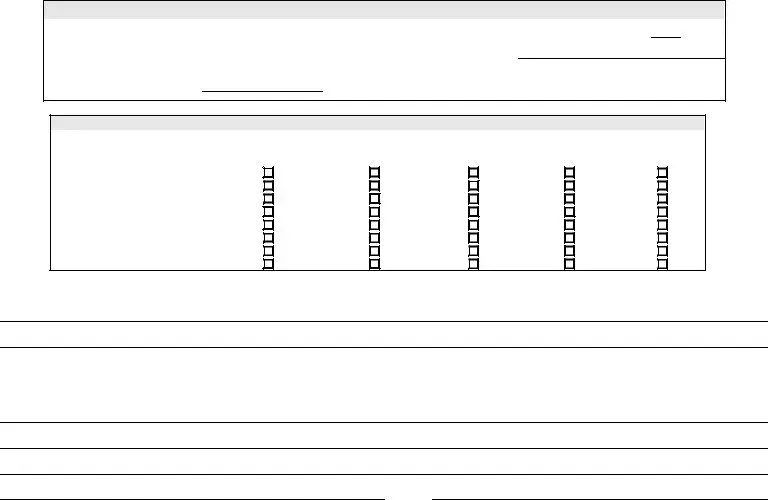What is the purpose of the 90 Day Performance Review?
The 90 Day Performance Review serves as an important evaluation tool to assess an employee's performance during their initial period at Oklahoma Baptist University. It helps supervisors provide feedback on various aspects of work performance, such as job knowledge, work quality, and communication. This assessment fosters an ongoing dialogue about strengths and areas that might need improvement, ensuring that employees have the support they need to succeed in their roles.
What areas are evaluated in the 90 Day Performance Review?
The review evaluates eight key areas: job knowledge, work quality, judgment, initiative, communication/listening, work ethic, professional conduct, and attendance. Each area allows supervisors to give ratings ranging from “Unsatisfactory” to “Superior,” providing a clear view of how well the employee is meeting expectations. Comments from supervisors are required for ratings given outside of “Satisfactory,” ensuring specific feedback is provided.
What should be done if an employee receives a rating of Unsatisfactory or Needs Improvement?
If an employee is marked “Unsatisfactory” or “Needs Improvement” in any area, a review meeting must be scheduled to discuss the progress. If two or more areas receive low ratings, a meeting with Human Resources is required. This approach creates an opportunity for constructive feedback, and it ensures that the necessary steps are taken to help the employee improve their job performance effectively.
How can employees respond to their performance review?
Employees have the opportunity to include their own comments during the review process. This allows them to express their perspectives on their performance, areas of strength, and any challenges they may face. After discussing their performance with their supervisor, employees should sign the review form to acknowledge its receipt and their participation in the review process.

